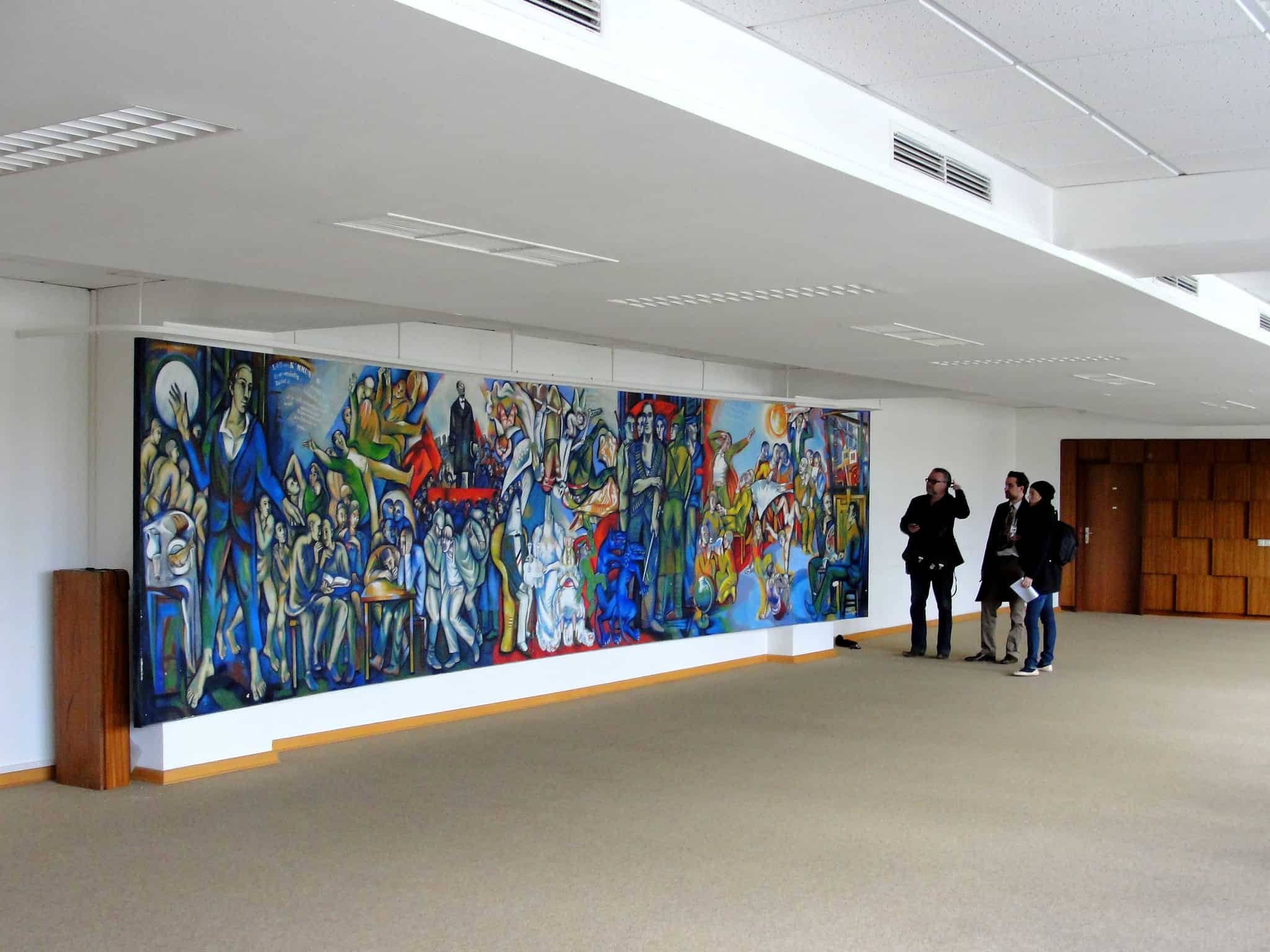Berlin is home to over 170 museums and art galleries, with many being the home to the most important collections of art and artifacts in the world. The city itself can be considered a museum on the outside, but a trip inside some of the beautiful architectural marvels that serve as museums are sure to not disappoint. Those looking to treat themselves to a day of culture and class will not be disappointed with the exhibits inside the walls of these five can't miss museums.
The Jewish Museum
 creativecommons.com/Hannah Rosen
creativecommons.com/Hannah Rosen
Visitors to Berlin will undoubted be drawn to the Jewish Museum not only by the extensive collection of artifacts and chronicled history, but by the building itself. The building, designed by Daniel Libeskind, hosts a striking zigzag architecture design with irregular windows and underground tunnels connection the three wings. The massive dark structure, from above, looks like a snake winding its way through the city of Berlin. Inside. through its artifacts and exhibits, the museum tells both the thrilling and sad history of Jewish people and culture in Germany from the start of the 20th century to modern times. There are also weekend workshops and special shows including the history of Jewish football and the evolution of Jewish music in New York.
DDR Museum
 creativecommons.com/Antonio Campoy
creativecommons.com/Antonio Campoy
The DDR Museum is one of the lesser know museums in Berlin, but is also among the city's most unique establishments. Considering a recent survey of German 16 year olds found many did not know that East Germany was a dictatorship, it may also be one of the most important museums in the city. The DDR Museum allows visitors to experience life as it was in Communist East Germany after World War II. Those on the tour get to watch authentic and propaganda-filled television in an East Berlin living room, spy on their neighbours, join the FDJ pioneers and march in the May Day parade. It is certainly a poignant look at another time period that is not so long in the past.
Topography of Terror
 creativecommons.com/Abhijeet Rane
creativecommons.com/Abhijeet Rane
The Topography of Terror Museum is not for the faint of heart. However, as Germany opens up about the black mark on their history, it is our responsibility to look and listen to learn and assure it never happens again. The museum, from the outside, looks unassuming. It very much looks like some abandoned workshop that is along a 200 metre section of the Berlin Wall. In actuality, it was a Gestapo headquarters and underneath is their horrible torture bunkers where many of the exhibits are now held. The museum explores both the rise of the Nazi Party and the atrocities committed by them in vivid, gory detail. While it may be hard to look at, a visit to the Topography of Terror museum pairs well with a visit to the Jewish Museum to put things in perspective.
Currywurst Museum
 creativecommons.com/sushiina
creativecommons.com/sushiina
Those who need a little pick up after the Topography of Terror should head to one of Berlin's more fun museums. In this case, it is the Currywurst Museum. The currywurst is as iconic to Berlin as the Bradenburg Gate or the Berlin Wall. The locals and visitors of the city scarf down 70 million curried sausages every year and Berliners seek to celebrate their beloved local dish, although it may be just an excuse to eat more currywurst. The museum is actually much more interesting than it seems -- inside visitors can learn about the least bloody of all of Germany's wars, the currywurst war, sit on the odd Sausage Sofa and understand why Volkswagen, of all companies, is that largest sausage maker in Germany. Admission to the museum is pretty steep compared to the other museums in town, but it does come with complimentary sausage that is praised as some of the best in town.
Pergamon Museum
 creativecommons.com/Jim Woodward
creativecommons.com/Jim Woodward
The Pergamon Museum is considered one of the finest archeological museums in the entire world. Visitors can explore artifacts not just from ancient Germany and its barbarian tribes, but from the entire world. The museum is praised primarily for its "big three" attractions. The major crowd pleasers are its massive Hellenistic alter, a Babylon Gate, and the Roman Market of Miletus. The Roman Market is recreated, but filled with artifacts from the site itself, while the other artifacts are the real deal. The collection of Islamic art also merits a special mention as it is one of the most extensive collections in Europe. Within the walls of this museum, visitors can get a true taste for history around the world.


